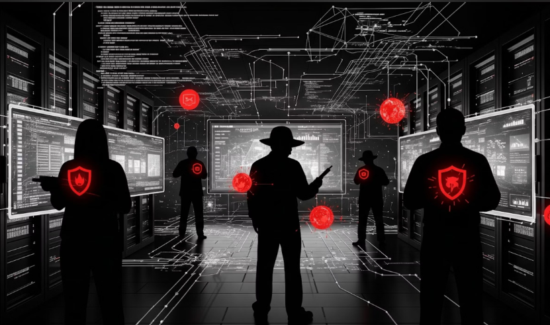Why Endpoint Security in 2020 Will Become More Complex


Why does endpoint security in 2020 look poised to become more complex? What new elements to enterprise IT infrastructures make endpoint security in 2020 more challenging to implement? Which capabilities should enterprises consider when looking into the future of endpoint cybersecurity?
Enterprises need to adapt to the increasing complexity of hackers and their cyber-attacks in 2020. Hackers never lay idle; instead, they continually work to improve their cyber-attacks, constantly evolving the threat landscape. Therefore, your business must deploy an endpoint security solution that can keep up with this deluge of malware.
Additionally, your enterprise needs to adapt to the changing technological landscape when considering their cybersecurity. Different devices and network connections require different endpoint capabilities to protect them. After all, the threats facing these new technologies won’t resemble the threats of the past.
What Can Threaten Endpoint Security in 2020?
The Internet of Things (IoT)
The IoT market continues to grow as more enterprises incorporate it into their networks; indeed, 451 Research discovered the number of connected devices could reach into the billions by 2020. Yet IoT attacks looks to also grow exponentially over the next year. In 2019 alone, endpoint security provider F-Secure found threats to IoT devices increased by 300 percent.
Unfortunately, IoT producers don’t prioritize cybersecurity in their manufacturing designs or processes. Few if any IoT device manufacturers provide any built-in cybersecurity on their connected items. Even if they do provide those protections, they only rarely update or patch them. In fact, IoT manufacturers may not announce or advertise their updates to their customers at all.
As just one example, IoT devices often come burdened with default administrator passwords; hackers can easily discover or guess these passwords through persistence or Dark Web databases.
Ideally, devices incorporated into your enterprise infrastructure would possess some kind of built-in cybersecurity protection. However, given the reality of IoT devices, next-generation endpoint security can help protect these devices in 2020. In fact, modern endpoint security can help you discover IoT devices which may otherwise become blind spots in your network.
Also, endpoint security in 2020 can deploy Zero Trust so unmonitored devices can’t just join your infrastructure; instead, your IT security team must approve of each application, device, or program trying to download itself to your IoT devices.
This leads neatly to our next endpoint security challenge for 2020.
The Proliferation of Mobile Devices
According to Verizon’s Mobile Security Index 2019, mobile device security threats grow faster than any other. Perhaps this doesn’t come as a surprise. Mobile devices can, and often do, connect over public WiFi even when conducting corporate business. Additionally, mobile devices invite data loss through theft and loss as well as penetrative attacks. Unmonitored applications could conceal malicious programs or intentions.
Of course, mobile devices not only proliferate in enterprise IT infrastructures—they thrive. Bring-your-own-devices cultures (BYOD) have become popular in businesses of all sizes; statistically, employees prefer working on the devices with which they feel most comfortable. Enterprises can’t give up such a profitable motivator, even if it brings security risks.
Therefore, your endpoint security must make up the difference in 2020. Many next-generation solutions provide visibility over your scaling and diverse networks; they can handle multiple operating systems and levels of permissions, ensuring a consistent layer of cybersecurity through the network.
Ransomware, Fileless Malware, and Other Penetrative Threats
Malware continues to plague enterprises, even as cybersecurity focuses on identity-based attacks. Ransomware, Fileless Malware, Cryptocurrency Mining, and other threats could damage your business processes and your long-term reputation.
Ransomware works to penetrate enterprise networks and holding their critical files hostage through encryption. In fact, more sophisticated ransomware can hold entire servers and networks hostage. Unless your business pays the ransom, your files remain locked. In severe cases, hackers may destroy the files if the ransom isn’t paid in a timely fashion.
Opposed to their loud ransomware cousins, cryptocurrency mining malware (cryptojacking) works quietly. It slips between the cracks in your endpoint visibility and dwells in the blind spots. From there, it draws on your endpoint processing power to perform its tasks; essentially, it performs complex processes to generate cryptocurrency for hackers. So long as it lingers on your devices, it can cost you thousands in electrical costs and cause major slowdowns.
Fileless malware infects a host computer’s dynamic memory and turns the power of the operating system against the user. Fileless malware seeks out vulnerabilities such as unpatched programs or applications.
By exploiting the dynamic memory processes, fileless malware can act without writing anything onto the disk. It just attaches its code to the native code and lets it run as such. Thus most legacy solutions never notice a malicious program running at all.
Next-generation endpoint security helps to generate and utilize threat intelligence for all of these malware species. Moreover, it uses next-generation antivirus can prevent or mitigate malware before it can enact its malicious programming. EDR capabilities can find penetrative attacks and help in remediation.
Endpoint security in 2020 must face the threats of 2020. No question about it.
Failure to Prioritize Endpoint Security in 2020
Endpoint security and cybersecurity overall need to become a priority in your enterprise’s business plans. Cybersecurity doesn’t just protect your business; it preserves your reputation, reassures your customers, and streamlines your business processes. Without the necessary prioritization which cybersecurity demands, your endpoint security will most likely fail.
So why are you waiting? Your enterprise needs endpoint security in 2020. To learn more, you should check out our 2019 Endpoint Security Buyer’s Guide! We cover the top solution providers and their key capabilities in detail!



















